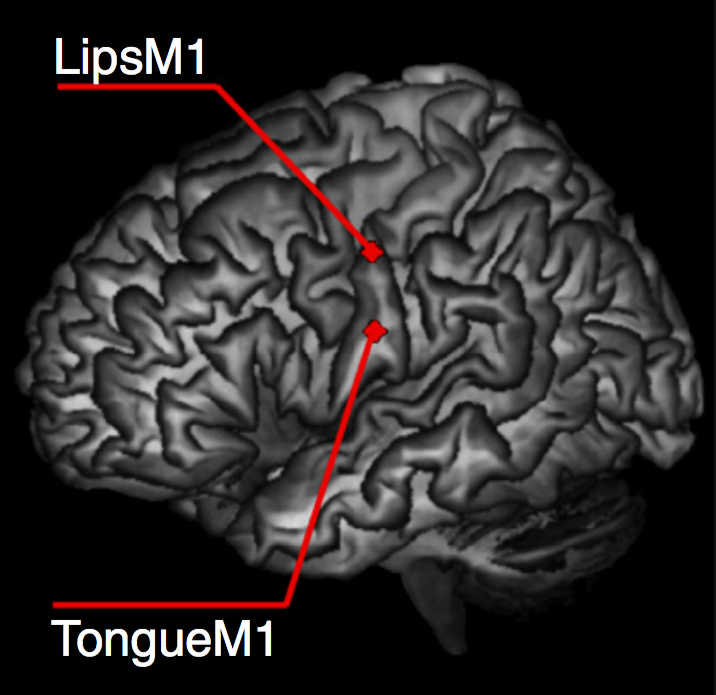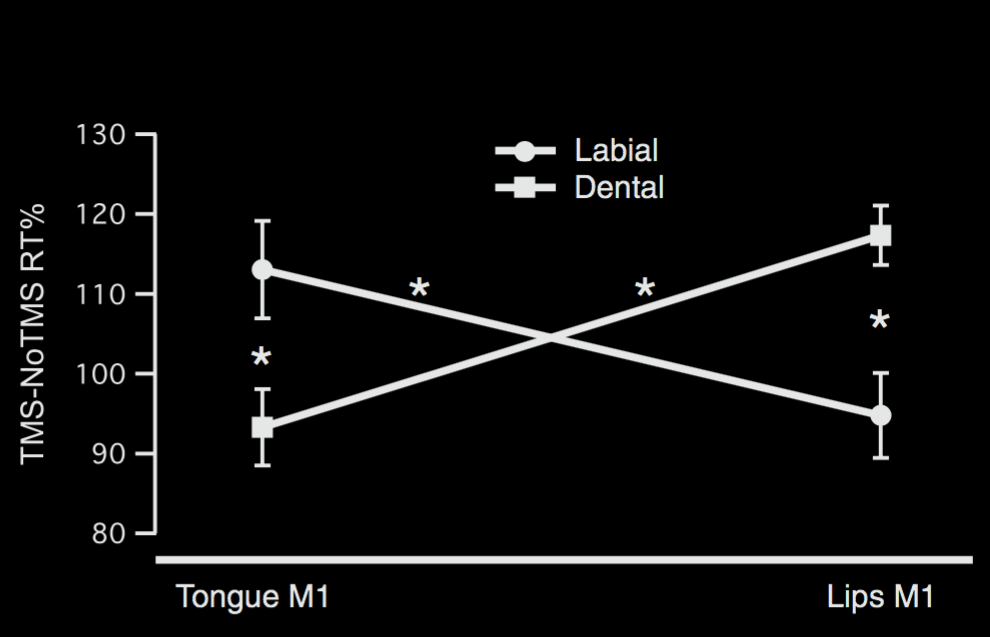Click here and press the right key for the next slide (or swipe left)
also ...
Press the left key to go backwards (or swipe right)
Press n to toggle whether notes are shown (or add '?notes' to the url before the #)
Press m or double tap to slide thumbnails (menu)
Press ? at any time to show the keyboard shortcuts
Categorical Perception of Speech




What determines where the category boundaries fall?





(1) There are category boundaries … .
(2) … which correspond to phonic gestures.
(3) Facts (1) and (2) stand in need of explanation.
(4) The best explanation of (1) and (2) involves the claim that the objects of speech perception are phonic gestures.
‘word listening produces a phoneme specific activation of speech motor centres’ \citep{Fadiga:2002kl}
‘Phonemes that require in production a strong activation of tongue muscles, automatically produce, when heard, an activation of the listener's motor centres controlling tongue muscles.’ \citep{Fadiga:2002kl}
‘word listening produces a phoneme specific activation of speech motor centres’
‘Phonemes that require in production a strong activation of tongue muscles, automatically produce, when heard, an activation of the listener's motor centres controlling tongue muscles.’
Fadiga et al (2002)

D'Ausilio et al (2009, figure 1)

D'Ausilio et al (2009, figure 1)
(1) There are category boundaries … .
(2) … which correspond to phonic gestures.
(3) Facts (1) and (2) stand in need of explanation.
(4) The best explanation of (1) and (2) involves the claim that the objects of speech perception are phonic gestures.